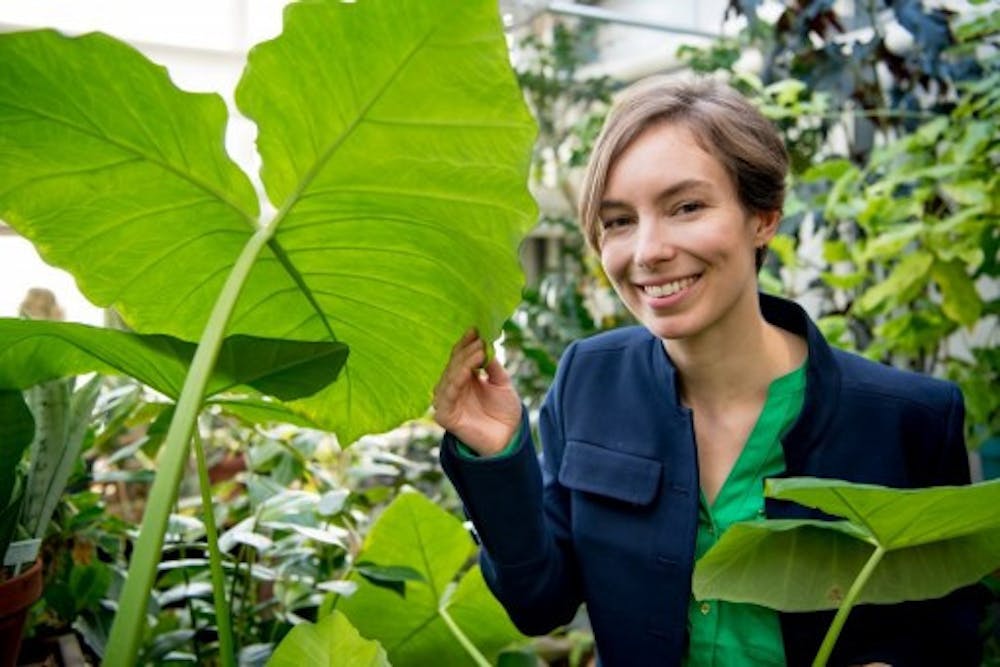Loren Albert, one of four Voss postdoctoral research associates at the Institute at Brown for Environment and Society, is taking her research to new heights. Using drones to survey forests from above, Albert hopes to better understand carbon flows and photosynthesis on a large scale.
A self-described “biologist at heart,” Albert started studying plants as an undergraduate at Reed College. She found it fascinating that she could measure a plant’s ability to take up carbon from the atmosphere on a “leaf level.” Albert “put a plant in a chamber, measure(d) the gases going in and gases going out” and estimated how much carbon was taken up by the leaves.
While earning her PhD at the University of Arizona, she measured the photosynthesis capabilities of individual trees in tropical forests, but one problem remained, Albert explained. “There’s an estimated 16,000 species in Amazonia, and I measured only around six.” Albert knew that this gap would never be closed with only individuals like her working on the ground, she said.
To address this issue, she has partnered with Jim Kellner, assistant professor of ecology and evolutionary biology. Kellner created the Brown Platform for Autonomous Remote Sensing, which built a drone to help the researchers observe forests on a much wider scale.
With the platform, the researchers have gained significant control over how and when their data is collected. For example, the team can now fly the drone over forests at times when they anticipate strong environmental stress to target data collection. This advantage provides researchers with dynamic information — they are able to “observe the system in short time scales in which the organism is reacting to the environment,” Kellner said. Essentially, “the system is living.”
Technological developments have aided researchers’ capacity to visualize carbon flows in forests and answer important questions regarding how plants facilitate the exchange of carbon from the atmosphere to the land, Kellner explained.
Though it is not possible to visually observe that flux, researchers may now use the drone to quantify solar-induced fluorescence, a glow that plants emit while getting rid of excess chemical energy. Researchers hope that glow analysis will inform future conclusions about the carbon cycle. William Klimpert ’18, a former member of the Kellner Lab, said he often measures plants in the “hot sun” or on the roof of the Sciences Library for the fluorescence study.
Both Albert and Kellner said their project poses complicated biological, engineering and statistical challenges. The team has had to pull knowledge from a variety of academic disciplines in their research. But they stress their work measuring carbon flows is crucial given the role of forests in offsetting human emissions. A 2014 study conducted by NASA estimated that tropical forests absorb 1.4 billion metric tons of carbon dioxide per year, roughly 56 percent of the total carbon absorbed across the world.
Albert has received valuable mentorship from Kellner, who strongly encouraged her to apply for the fellowship after seeing her give a talk at conference. Albert brings a different “body of knowledge” to his work, which inspires productive collaboration, Kellner said.
Correction: A previous version of this article misidentified the Kellner lab as Kellman's lab. The Herald regrets the error.





